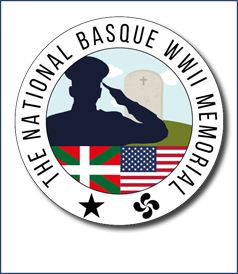Musical Instruments
Folk Instruments of Euskal Herria
The following classification is mostly based on the system employed by Padre Donostia in his work entitled "Instrumentos de Música Popular Española" (Spanish Folk Instruments), in turn based on the E. Hornbostel and C. Sachs instrument classification. This list we includes instruments still played today, instruments found up until fairly recently, and instruments which fell into disuse a long time ago; also included are instruments and toys used for different purposes.
Listen to samples of some instruments bienve.com
1. IDIOPHONES
A) Struck directly:
Txalaparta, toberas, kirikoketa, percussion with gorse: hands, heels; sticks, swords
struck against one another; triangle
B) Struck indirectly:
Artxalus (small pieces of a hard material placed between the fingers and knocked against each other to make sound), castanets, spoons, kalaka (a kind of wooden rattle), hammer-rattle, bells, chimes, jingling disks of a tambourine, reed, kaskabeleta, kilikalaska, fingers (snapping), wren eggs, coconuts.
D) Rubbed or scraped:
Carraca (rattle-type noise maker), bottles scraped with a stick or other instrument, bones, squeaking axle of a farm cart.
E) Plucked (flexible):
Trump/Jew's harp/musugitarra/musumusika, rana (frog-shaped clacker toy with a metal tongue, which when pressed makes a clicking noise).
2.- MEMBRANOPHONES
We will further classify this group according to how the sound is activated.
A) Struck with a stick or drumstick, or the hands:
Tamboril, atabal, tambor, caja, bombo, pandero (different types and sizes of drums or tambourines).
B) Rubbed: Directly: pandero (tambourine); Indirectly, with vibrations emitted by means of a stick or string: eltzegorra, ttipiontzia/zambomba.
D) Vibrated by air (mirlitons): Tulurte, turuta/orrazia, paper instruments.
3.- CHORDOPHONES
The music from these instruments is produced from the vibration of one or more taut strings. They may be either monodic or polyphonic, and usually have a resonating chamber. They can be classified into three groups, according to how the string or strings are activated:
A) Plucked: Lute, bandurria (Spanish mandolin), guitar, maniura (harp).
B) Bowed: Rabete (revel), violin, zarrabete, Arizkun "harp".
D) Struck: Ttun-ttun.
4.- AEROPHONES
These instruments are classified according to how the air is vibrated.
A) Flutes:
Vertical nose flutes:
Toy whistles: txulubitas, txilibitu
One-handed flutes: txistu, txirula, silbote
Two-handed flutes: txilibito/txilibitu/txiflo
Transverse flutes: cross flute, fife
Other types of flutes and whistles: Zikiratzaile/txilibitu (panpipes), txulubita (piston), ocarina, txulubita (whistle made from an apricot stone), txulubita (tin whistle).
B) Reed instruments:
Double-reed (oboe type): turuta, tutubi, sunpriñu, txanbela, dulzaina, gaita navarra
Single-reed:
- (dampered holes-clarinet type): turuta, cornet, alboka, clarinet
- (free-playing): harmonica, accordion, diatonic accordion, small diatonic accordion, chromatic accordion
Xirolarrus (bagpipe family): Xirolarru-bota (double reed), xirolarru-boha (single reed)
Other types: lapwing birdcall
D) Buzzing lips/trumpet:
Natural (no mechanical device): horn
Chromatic (band instruments): trumpet, trombone, euphonium, tuba.
E) Free aerophones:
Burrun, firringila, ziria



















































































































